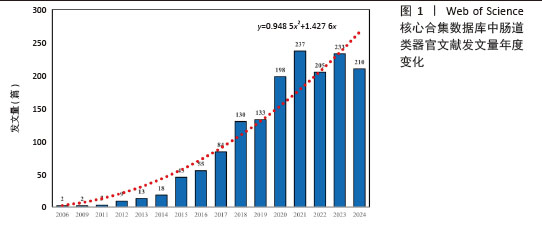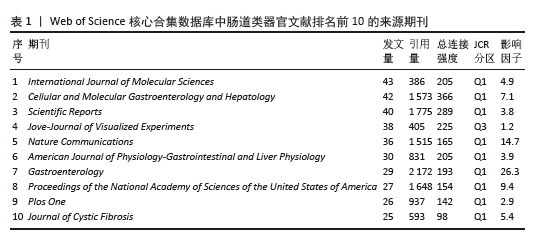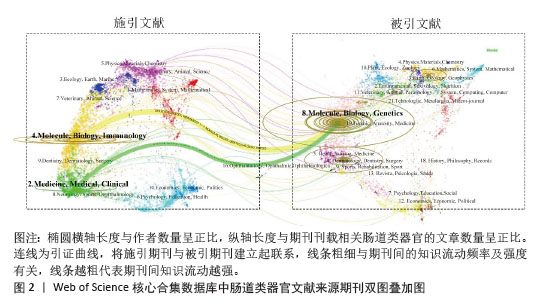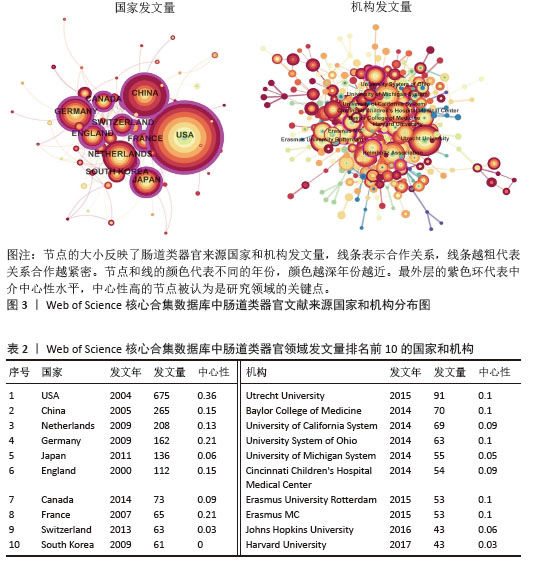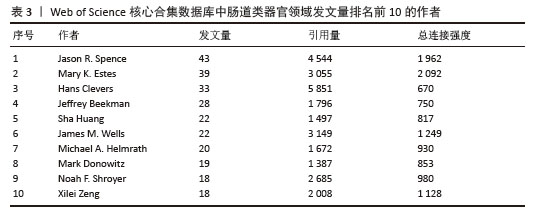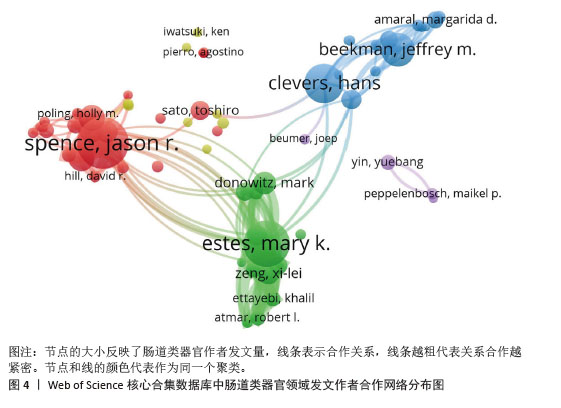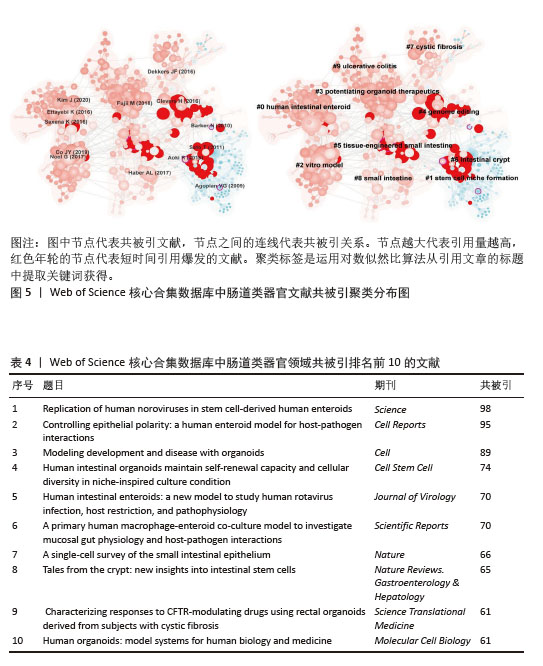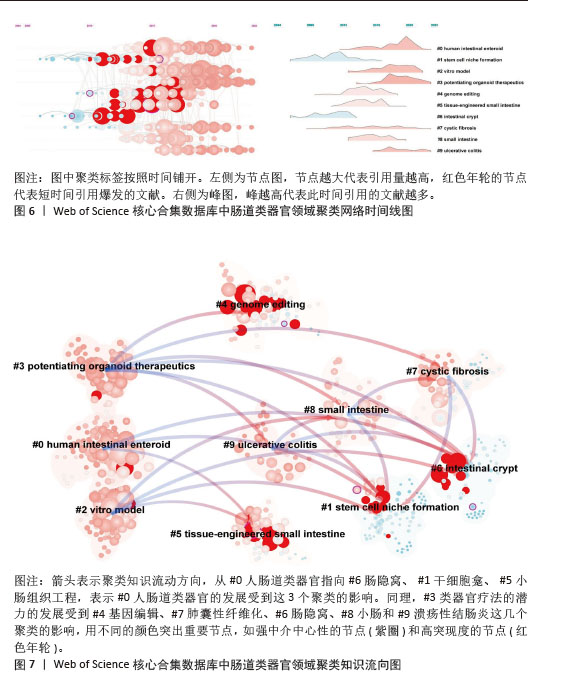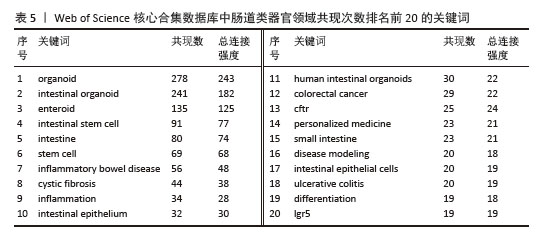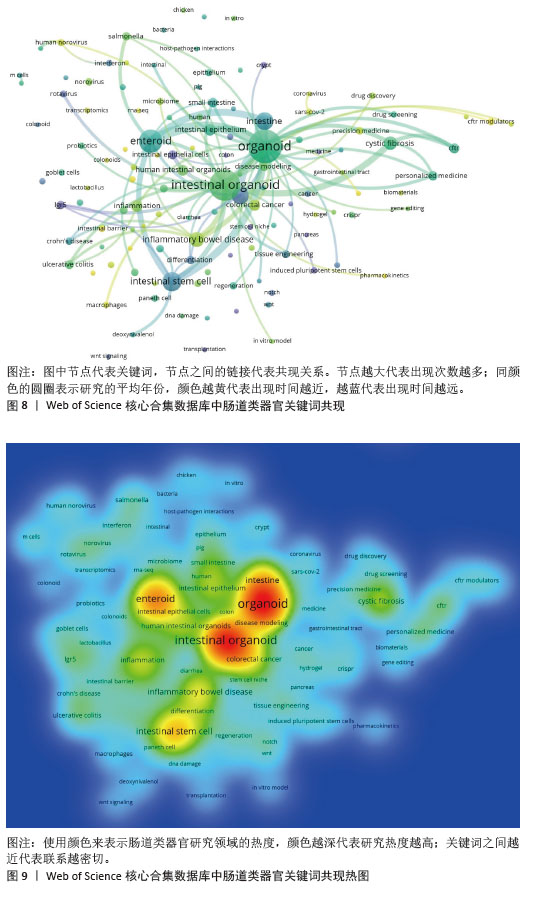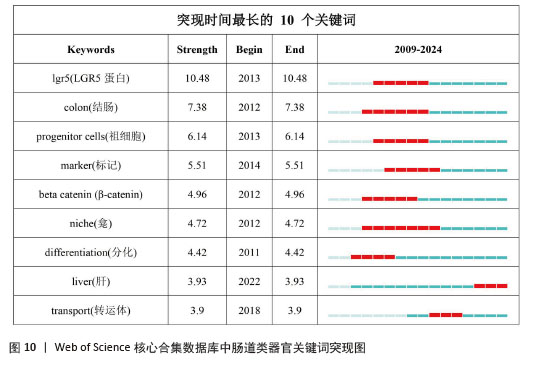[1] SHARKEY KA, MAWE GM. The enteric nervous system. Physiol Rev. 2023;103(2): 1487-1564.
[2] 沈馨,孙志宏.微生物-肠-脑轴与神经系统疾病的研究进展[J].生物工程学报, 2021,37(11):3781-3788.
[3] 徐菁,刘坤,马竹芳.Ibs患者神经内分泌轴功能与肠道菌群、炎症反应及胃肠症状的相关性[J]. 临床和实验医学杂志, 2023,22(4):360-364.
[4] YAN M, MAN S, SUN B, et al. Gut liver brain axis in diseases: the implications for therapeutic interventions. Signal Transduct Target Ther. 2023;8(1):443.
[5] PERDIJK O, AZZONI R, MARSLAND BJ. The microbiome: an integral player in immune homeostasis and inflammation in the respiratory tract. Physiol Rev. 2024; 104(2):835-879.
[6] TAELMAN J, DIAZ M, GUIU J. Human Intestinal Organoids: Promise and Challenge. Front Cell Dev Biol. 2022;10:854740.
[7] 孙广晨,李宏宇,陈江,等.类器官在生物医学中研究进展及应用[J].临床军医杂志,2023,51(11):1206-1210.
[8] 强龙征,毛海光,王梦婷,等.肠道类器官在肠疾病机制研究中的运用[J].生物化学与生物物理进展,2024,51(2):
394-403.
[9] SATO T, CLEVERS H. Growing self-organizing mini-guts from a single intestinal stem cell: mechanism and applications. Science. 2013;340(6137):1190-1194.
[10] SMITH E, COCHRANE WJ. Cystic organoid teratoma; report of a case. Can Med Assoc J. 1946;55(2):151.
[11] SATO T, VRIES RG, SNIPPERT HJ, et al. Single Lgr5 stem cells build crypt-villus structures in vitro without a mesenchymal niche. Nature. 2009;459(7244):262-265.
[12] ETTAYEBI K, KAUR G, PATIL K, et al. Insights into human norovirus cultivation in human intestinal enteroids. mSphere. 2024;9(11):e0044824.
[13] 李向阳,赵鑫,相小松,等.诱导型多能干细胞在体外三维环境中诱导分化出肠道类器官[J].中国组织工程研究, 2017,21(25):4057-4061.
[14] BOUFFI C, WIKENHEISER-BROKAMP KA, CHATURVEDI P, et al. In vivo development of immune tissue in human intestinal organoids transplanted into humanized mice. Nat Biotechnol. 2023;41(6):824-831.
[15] ZENK F, FLECK JS, JANSEN SMJ, et al. Single-cell epigenomic reconstruction of developmental trajectories from pluripotency in human neural organoid systems. Nat Neurosci. 2024;27(7):1376-1386.
[16] SHINOZAWA T, KIMURA M, CAI Y, et al. High-Fidelity Drug-Induced Liver Injury Screen Using Human Pluripotent Stem Cell-Derived Organoids. Gastroenterology. 2021;160(3):831-846.e10.
[17] QU M, XIONG L, LYU Y, et al. Establishment of intestinal organoid cultures modeling injury-associated epithelial regeneration. Cell Res. 2021;31(3):259-271.
[18] YUAN L, XIE S, BAI H, et al. Reconstruction of dynamic mammary mini gland in vitro for normal physiology and oncogenesis. Nat Methods. 2023;20(12):2021-2033.
[19] ODA M, HATANO Y, SATO T. Intestinal epithelial organoids: regeneration and maintenance of the intestinal epithelium. Curr Opin Genet Dev. 2022;76:101977.
[20] HAYNES J, PALANIAPPAN B, TSOPMEGHA E, et al. Regulation of nutrient and electrolyte absorption in human organoid-derived intestinal epithelial cell monolayers. Transl Res. 2022;248:22-35.
[21] AI S, LI Y, ZHENG H, et al. Collision of herbal medicine and nanotechnology: a bibliometric analysis of herbal nanoparticles from 2004 to 2023. J Nanobiotechnology. 2024;22(1):140.
[22] LEYDESDORFF L, CARLEY S, RAFOLS I. Global maps of science based on the new Web-of-Science categories. Scientometrics. 2013;94(2):589-593.
[23] CHEN C. Searching for intellectual turning points: progressive knowledge domain visualization. Proc Natl Acad Sci U S A. 2004;101 Suppl 1(Suppl 1):5303-5310.
[24] VAN ECK NJ, WALTMAN L. Software survey: VOSviewer, a computer program for bibliometric mapping. Scientometrics. 2010;84(2):523-538.
[25] CHEN C, LEYDESDORFF L. Patterns of Connections and Movements in Dual-Map Overlays: A New Method of Publication Portfolio Analysis. JASIS. 2014;65(2):334-351.
[26] SMALL H. Co-Citation in the Scientific Literature: A New Measure of the Relationship between Two Documents. JASIS. 1973;24(4):265-269.
[27] 常金霞,刘羽飞,牛少辉,等.巨噬细胞极化在组织修复过程中的可视化分析[J].中国组织工程研究,2025,29(7):1486-1496.
[28] ETTAYEBI K, CRAWFORD SE, MURAKAMI K, et al. Replication of human noroviruses in stem cell-derived human enteroids. Science. 2016;353(6306):1387-1393.
[29] CO JY, MARGALEF-CATALÀ M, LI X, et al. Controlling Epithelial Polarity: A Human Enteroid Model for Host-Pathogen Interactions. Cell Rep. 2019;26(9): 2509-2520.e4.
[30] CLEVERS H. Modeling Development and Disease with Organoids. Cell. 2016; 165(7):1586-1597.
[31] RECALDIN T, STEINACHER L, GJETA B, et al. Human organoids with an autologous tissue-resident immune compartment. Nature. 2024;633(8028):165-173.
[32] CAPDEVILA C, MILLER J, CHENG L, et al. Time-resolved fate mapping identifies the intestinal upper crypt zone as an origin of Lgr5+ crypt base columnar cells. Cell. 2024;187(12):3039-3055.e14.
[33] FOERSTER EG, MUKHERJEE T, CABRAL-FERNANDES L, et al. How autophagy controls the intestinal epithelial barrier. Autophagy. 2022;18(1):86-103.
[34] WAKISAKA Y, SUGIMOTO S, SATO T. Organoid Medicine for Inflammatory Bowel Disease. Stem Cells. 2022;40(2):123-132.
[35] CHEN Y, LU Z, FENG J, et al. Novel recombinant R-spondin1 promotes hair regeneration by targeting the Wnt/β-catenin signaling pathway. Acta Biochim Biophys Sin (Shanghai). 2023;55(8):1213-1221.
[36] BUSTAMANTE-MADRID P, BARBÁCHANO A, ALBANDEA-RODRÍGUEZ D, et al. Vitamin D opposes multilineage cell differentiation induced by Notch inhibition and BMP4 pathway activation in human colon organoids. Cell Death Dis. 2024;15(4):301.
[37] GOPALAKRISHNAN S, BAKKE I, HANSEN MD, et al. Comprehensive protocols for culturing and molecular biological analysis of IBD patient-derived colon epithelial organoids. Front Immunol. 2023;14:1097383.
[38] MIYOSHI H, STAPPENBECK TS. In vitro expansion and genetic modification of gastrointestinal stem cells in spheroid culture. Nat Protoc. 2013;8(12):2471-2482.
[39] MAYORGAS A, DOTTI I, MARTÍNEZ-PICOLA M, et al. A Novel Strategy to Study the Invasive Capability of Adherent-Invasive Escherichia coli by Using Human Primary Organoid-Derived Epithelial Monolayers. Front Immunol. 2021;12:646906.
[40] YANG L, HAN L, LIU N. A New Approach to Journal Co-Citation Matrix Construction Based on the Number of Co-Cited Articles in Journals. Scientometrics. 2019;120(3): 507-517.
[41] AN S, HUH H, KO JS, et al. Establishment and Characterization of Patient-Derived Intestinal Organoids from Pediatric Crohn’s Disease Patients. Pediatr Gastroenterol Hepatol Nutr. 2024;27(6):355-363.
[42] CARTRY J, BEDJA S, BOILÈVE A, et al. Implementing patient derived organoids in functional precision medicine for patients with advanced colorectal cancer. J Exp Clin Cancer Res. 2023;42(1):281.
[43] MAO Y, WANG W, YANG J, et al. Drug repurposing screening and mechanism analysis based on human colorectal cancer organoids. Protein Cell. 2024;15(4):285-304.
[44] KROES S, BIERLAAGH MC, LEFFERTS JW, et al. Elexacaftor/tezacaftor/ivacaftor efficacy in intestinal organoids with rare CFTR variants in comparison to CFTR-F508del and CFTR-wild type controls. J Cyst Fibros. 2025;24(1):175-182.
[45] WATSON CL, MAHE MM, MÚNERA J, et al. An in vivo model of human small intestine using pluripotent stem cells. Nat Med. 2014;20(11):1310-1314.
[46] NAKANISHI A, TOYAMA S, ONOZATO D, et al. Effects of human induced pluripotent stem cell-derived intestinal organoids on colitis-model mice. Regen Ther. 2022;21: 351-361.
[47] YUI S, NAKAMURA T, SATO T, et al. Functional engraftment of colon epithelium expanded in vitro from a single adult Lgr5⁺ stem cell. Nat Med. 2012;18(4):618-623.
[48] MULERO-RUSSE A, GARCÍA AJ. Engineered Synthetic Matrices for Human Intestinal Organoid Culture and Therapeutic Delivery. Adv Mater. 2024;36(9):e2307678.
[49] LLORENTE C. Isolation of Myenteric and Submucosal Plexus from Mouse Gastrointestinal Tract and Subsequent Co-Culture with Small Intestinal Organoids. Cells. 2024;13(10):815.
[50] TSAI YH, NATTIV R, DEDHIA PH, et al. In vitro patterning of pluripotent stem cell-derived intestine recapitulates in vivo human development. Development. 2017;144(6):1045-1055.
[51] SUGIMOTO S, KOBAYASHI E, FUJII M, et al. An organoid-based organ-repurposing approach to treat short bowel syndrome. Nature. 2021;592(7852):99-104.
[52] JELINSKY SA, DERKSEN M, BAUMAN E, et al. Molecular and Functional Characterization of Human Intestinal Organoids and Monolayers for Modeling Epithelial Barrier. Inflamm Bowel Dis. 2023;29(2):195-206.
[53] EDGAR RD, PERRONE F, FOSTER AR, et al. Culture-Associated DNA Methylation Changes Impact on Cellular Function of Human Intestinal Organoids. Cell Mol Gastroenterol Hepatol. 2022;14(6): 1295-1310.
[54] LIU S, KUMARI S, HE H, et al. Biosensors integrated 3D organoid/organ-on-a-chip system: A real-time biomechanical, biophysical, and biochemical monitoring and characterization. Biosens Bioelectron. 2023;231:115285.
[55] 胡亮,裴雪涛,李艳华.肠器官芯片构建技术及应用研究进展[J].军事医学, 2023,47(8):561-565.
|
